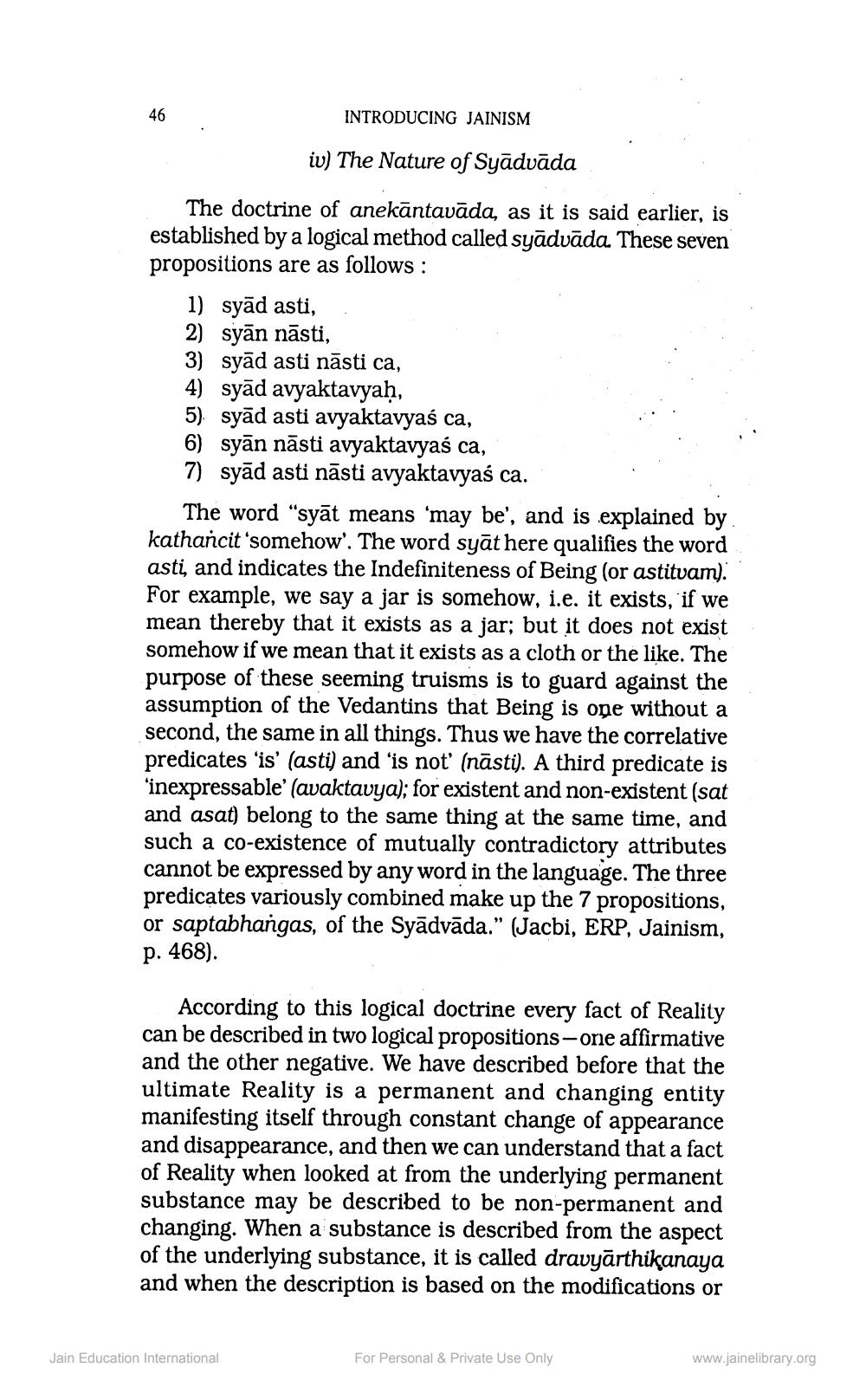________________
46
:
INTRODUCING JAINISM iv) The Nature of Syāduāda
The doctrine of anekāntavāda, as it is said earlier, is established by a logical method called syāduāda. These seven propositions are as follows:
1) syād asti, 2) syān nāsti, 3) syād asti nāsti ca, 4) syād avyaktavyah, 5) syād asti avyaktavyas ca, 6) syān nāsti avyaktavyaś ca, 7) syād asti nāsti avyaktavyaś ca.
The word "syāt means 'may be', and is explained by kathancit 'somehow'. The word syāt here qualifies the word asti, and indicates the Indefiniteness of Being (or astitvam). For example, we say a jar is somehow, i.e. it exists, if we mean thereby that it exists as a jar; but it does not exist somehow if we mean that it exists as a cloth or the like. The purpose of these seeming truisms is to guard against the assumption of the Vedantins that Being is one without a second, the same in all things. Thus we have the correlative predicates 'is' (asti) and 'is not' (nāsti). A third predicate is ‘inexpressable' (avaktavya); for existent and non-existent (sat and asat) belong to the same thing at the same time, and such a co-existence of mutually contradictory attributes cannot be expressed by any word in the language. The three predicates variously combined make up the 7 propositions, or saptabhangas, of the Syādvāda.” (Jacbi, ERP, Jainism, p. 468).
According to this logical doctrine every fact of Reality can be described in two logical propositions-one affirmative and the other negative. We have described before that the ultimate Reality is a permanent and changing entity manifesting itself through constant change of appearance and disappearance, and then we can understand that a fact of Reality when looked at from the underlying permanent substance may be described to be non-permanent and changing. When a substance is described from the aspect of the underlying substance, it is called dravyārthikanaya and when the description is based on the modifications or
Jain Education International
For Personal & Private Use Only
www.jainelibrary.org




